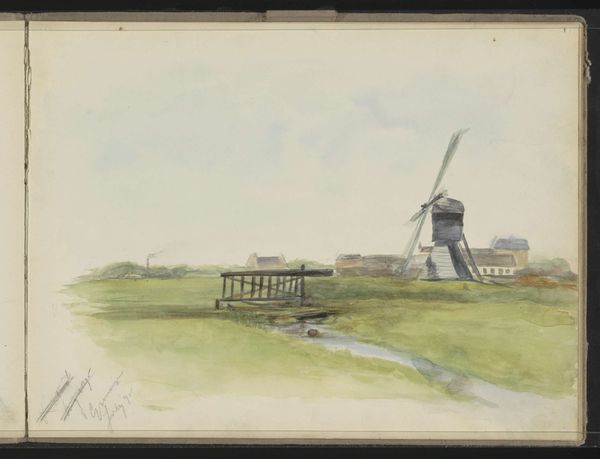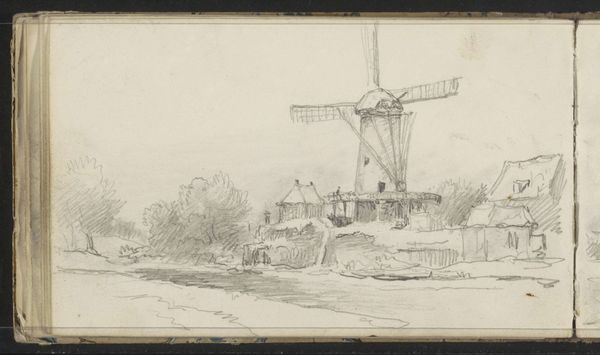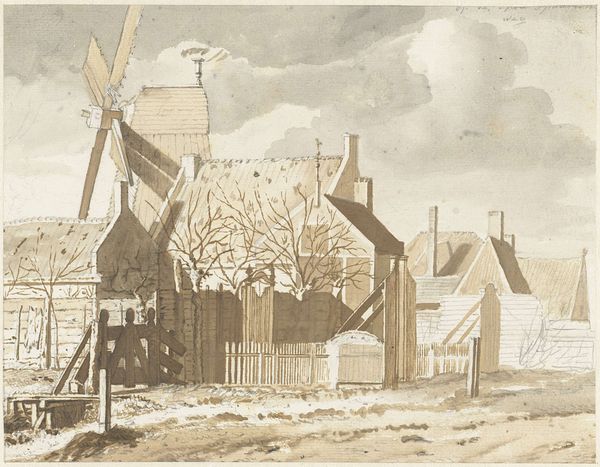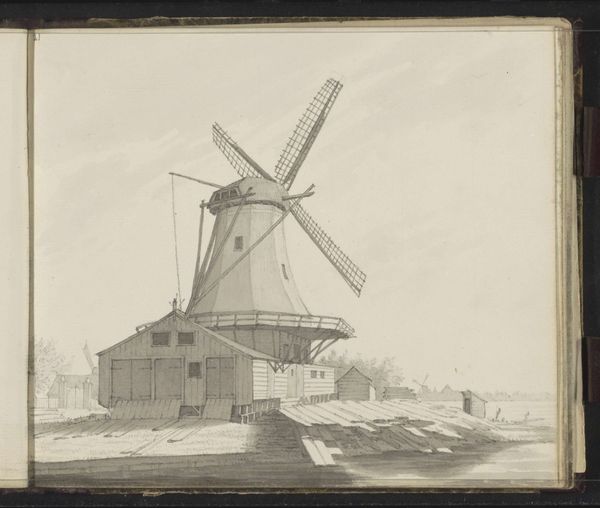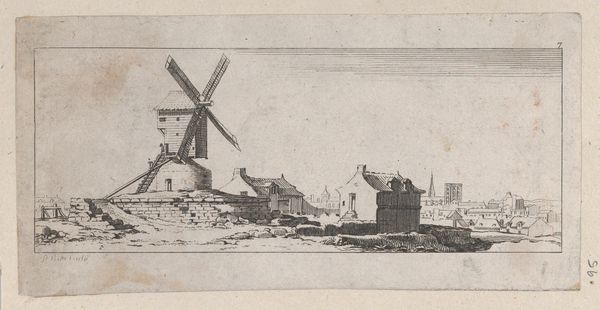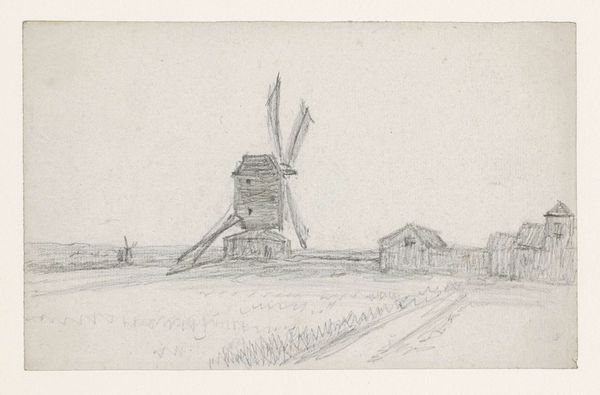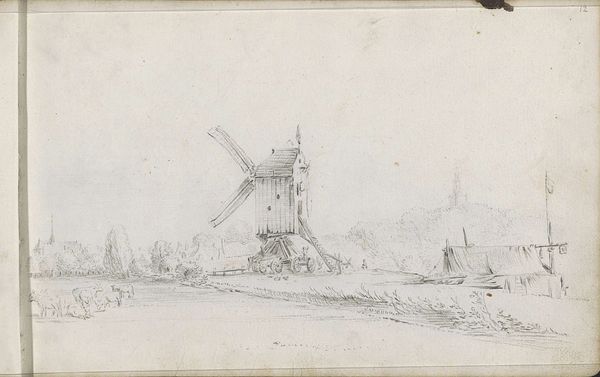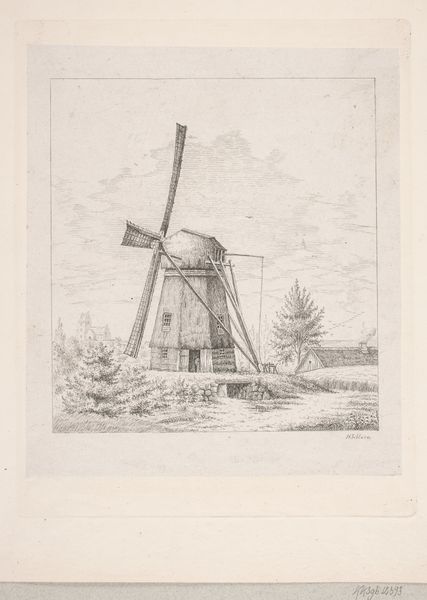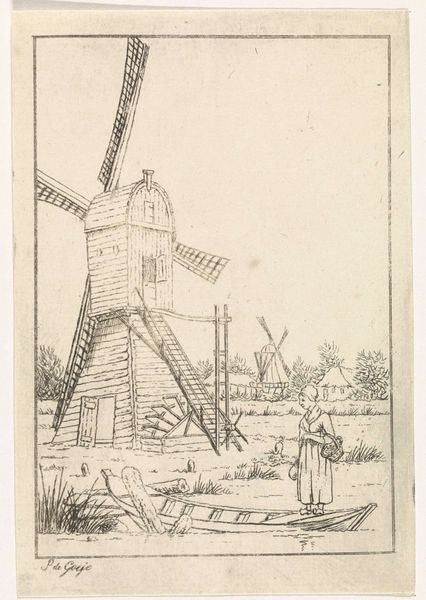
drawing, watercolor
#
drawing
#
landscape
#
watercolor
#
pencil drawing
#
romanticism
#
watercolor
Dimensions: height 150 mm, width 122 mm
Copyright: Rijks Museum: Open Domain
Editor: We're looking at Hendrik Abraham Klinkhamer's "Houtzaagmolen," made around 1845, a pencil and watercolor drawing. It's delicate, almost ethereal, and the muted colors give it a melancholic feel. What strikes you most about this piece? Curator: It's a fascinating portrayal of industry, wouldn't you agree? Though rendered in soft watercolor and in the Romantic style, this mill isn't simply a picturesque object. How does it function within its socio-economic context? It depicts a sawmill; those structures reflect Holland's burgeoning timber industry in the mid-19th century, key to shipbuilding and infrastructure. How does its representation in art relate to its public function? Editor: So it's not just a pretty picture; it's documenting an essential part of the Dutch economy. Is that why it might be considered Romantic art? Curator: Precisely! Romanticism wasn’t merely about beautiful landscapes. Here the artist considers the relationship between landscape, industry and the growing urbanized culture. How does that choice impact the painting and the statement it's making? And whose stories might this image silence or leave out? Editor: I see. It's romanticizing a hard-working industrial site, but maybe overlooking some of the realities of working in it. Thank you! Curator: My pleasure. It always comes down to perspective, and whose voices we are hearing – or not hearing – through art.
Comments
No comments
Be the first to comment and join the conversation on the ultimate creative platform.

